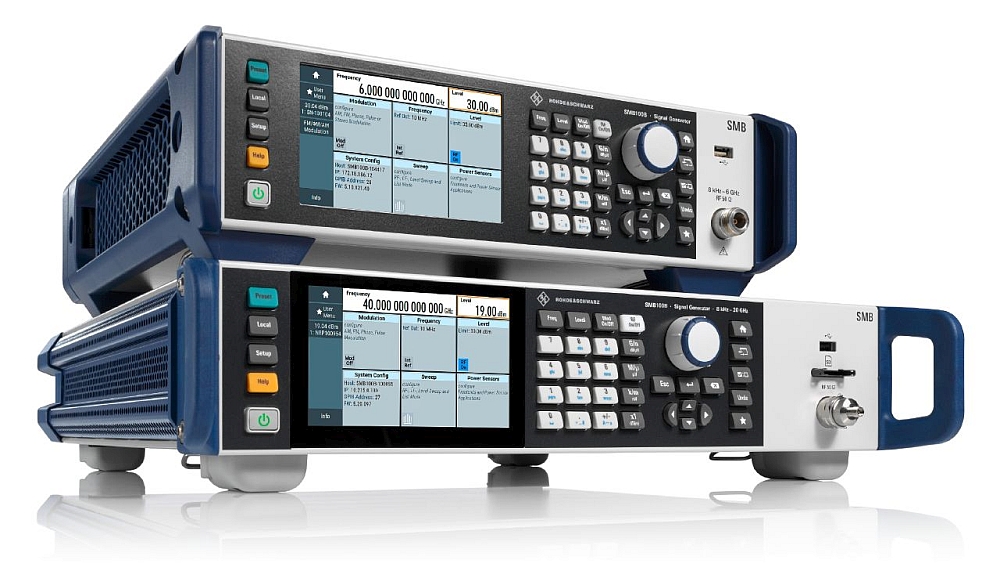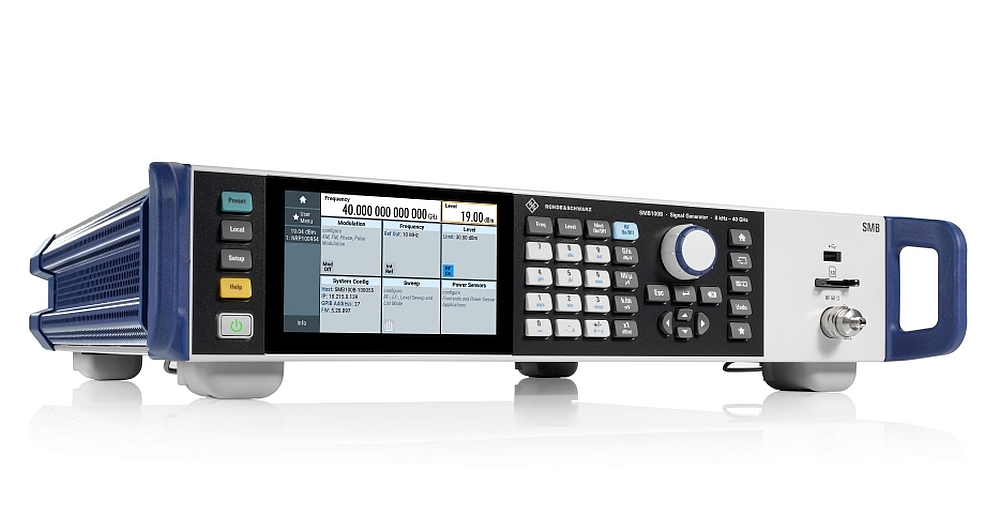- Rohde & Schwarz’s R&S SMB100B microwave signal generators can now deliver analog signals up to 40 GHz.
- Depending on the model, these generators cover a frequency range from 8 kHz to 12.75 GHz, 20 GHz, 31.8 GHz or 40 GHz.
According to Rohde & Schwarz, the new R&S SMB100B analog microwave signal generator offers an outstanding, market-leading performance for analog signal generation up to 40 GHz in the midrange class.
The R&S SMB100B is convenient for all applications requiring clean analog signals or high output power from 8 kHz to 40 GHz. Typical applications include testing radar receivers, semiconductor components, upconverters, downconverters or amplifiers. The high output power and low phase noise make it ideal as a source for simulating interferers for blocking tests.
The R&S SMB100B microwave signal generator stands out for its signal purity. It features single-sideband (SSB) phase noise of less than -112 dBc (measured) at 10 GHz and 20 kHz offset, and frequency-range-dependent broadband noise that can be well below -145 dBc (measured).

Scalable output power
As standard, the R&S®SMB100B offers an output power of +20 dBm up to 12.75 GHz and +18 dBm up to 20 GHz. The maximum output power available as an option is at least +24 dBm in the same frequency range. It reaches +16 dBm up to 18 GHz and +15 dBm up to 40 GHz. With the high-power option, maximum power delivery is at least +22 dBm up to 20 GHz and at least +19 dBm up to 40 GHz. Users can activate these options at any time by entering a key code. The generator is thus capable of delivering a maximum power of 34 dBm at 1 GHz, 25 dBm at 20 GHz and 19 dBm at 40 GHz (measured).
Reference oscillator
For users seeking even better close-in phase noise and frequency stability, and less temperature-based variation in performance, in addition to the standard OXCO reference oscillator, a higher performance version is available for all frequency ranges. In addition to the conventional 10 MHz reference frequency, users can choose optionally 1 MHz to 100 MHz as well as 1 GHz reference frequency signals.
Loss compensation functions
With each increase in the frequency of the required signal, the challenge of obtaining the correct level input to a device increases: The R&S SMB100B supports two additional features to compensate for path losses and variations in the signal caused by setups with additional test fixtures, cables or amplifiers.
These features help to provide the wanted power level at the reference plane i.e. at the input of the device under test. One of them, the user correction function (UCOR), compensates if the frequency response of the setup is known and stable. However, there are still unknown factors especially if the setup includes additional active devices such as an amplifier. Then the frequency response of the setup with an external additional amplifier can vary over level or temperature. Closed-loop power control can compensate for all these variations by continuously measuring the input level to the DUT i.e. at the wanted reference plane with a suitable R&S NRP power sensor feeding its measured level back to the generator to adjust the output power accordingly.
Automatic code generation
The R&S SMB100B allow teh users to create their own customized menus, so that the parameters they most use are always available. They can generate code to automate measurements first made manually with the SCPI macro recorder while the measurements are set up and run, then use the code generator to export the instructions in languages such as MATLAB®.
Thanks to R&S Legacy Pro, the R&S SMB100B (and other Rohde & Schwarz test equipment) can be used to emulate other instruments such as R&S SMB100A or competitor instruments directly, as a drop-in replacement using the existing code.






